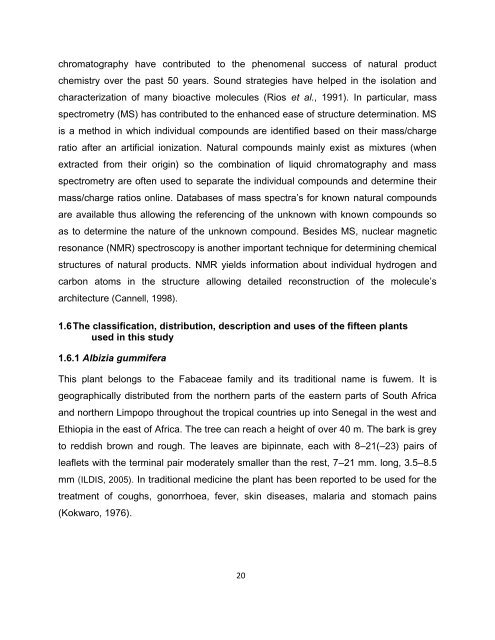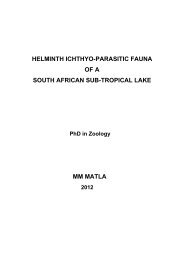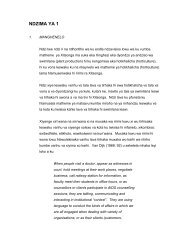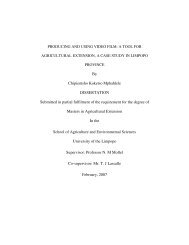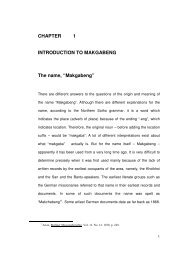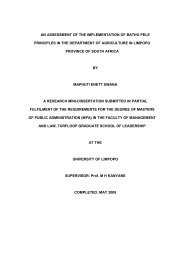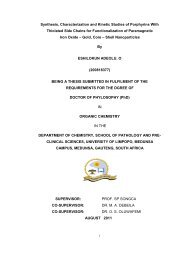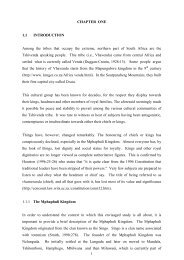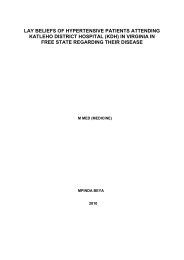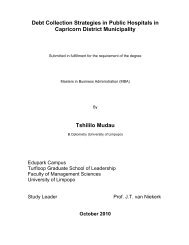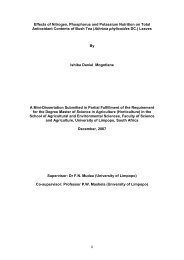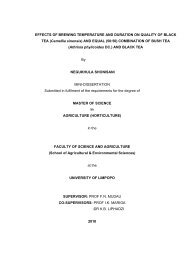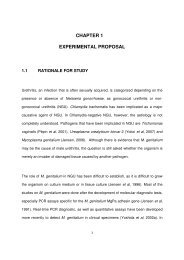Mmushi T MSc (Microbiology).pdf
Mmushi T MSc (Microbiology).pdf
Mmushi T MSc (Microbiology).pdf
Create successful ePaper yourself
Turn your PDF publications into a flip-book with our unique Google optimized e-Paper software.
chromatography have contributed to the phenomenal success of natural product<br />
chemistry over the past 50 years. Sound strategies have helped in the isolation and<br />
characterization of many bioactive molecules (Rios et al., 1991). In particular, mass<br />
spectrometry (MS) has contributed to the enhanced ease of structure determination. MS<br />
is a method in which individual compounds are identified based on their mass/charge<br />
ratio after an artificial ionization. Natural compounds mainly exist as mixtures (when<br />
extracted from their origin) so the combination of liquid chromatography and mass<br />
spectrometry are often used to separate the individual compounds and determine their<br />
mass/charge ratios online. Databases of mass spectra’s for known natural compounds<br />
are available thus allowing the referencing of the unknown with known compounds so<br />
as to determine the nature of the unknown compound. Besides MS, nuclear magnetic<br />
resonance (NMR) spectroscopy is another important technique for determining chemical<br />
structures of natural products. NMR yields information about individual hydrogen and<br />
carbon atoms in the structure allowing detailed reconstruction of the molecule’s<br />
architecture (Cannell, 1998).<br />
1.6 The classification, distribution, description and uses of the fifteen plants<br />
used in this study<br />
1.6.1 Albizia gummifera<br />
This plant belongs to the Fabaceae family and its traditional name is fuwem. It is<br />
geographically distributed from the northern parts of the eastern parts of South Africa<br />
and northern Limpopo throughout the tropical countries up into Senegal in the west and<br />
Ethiopia in the east of Africa. The tree can reach a height of over 40 m. The bark is grey<br />
to reddish brown and rough. The leaves are bipinnate, each with 8–21(–23) pairs of<br />
leaflets with the terminal pair moderately smaller than the rest, 7–21 mm. long, 3.5–8.5<br />
mm (ILDIS, 2005). In traditional medicine the plant has been reported to be used for the<br />
treatment of coughs, gonorrhoea, fever, skin diseases, malaria and stomach pains<br />
(Kokwaro, 1976).<br />
20


